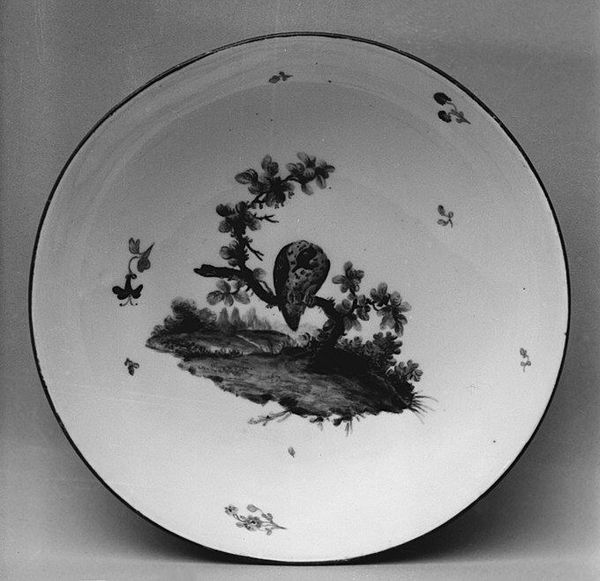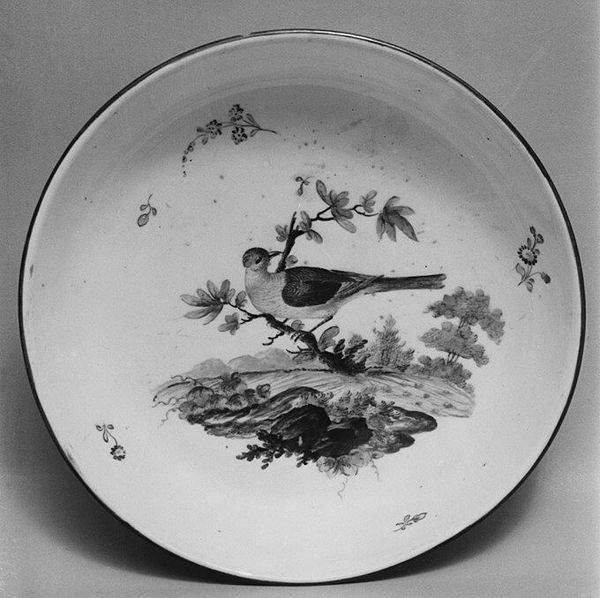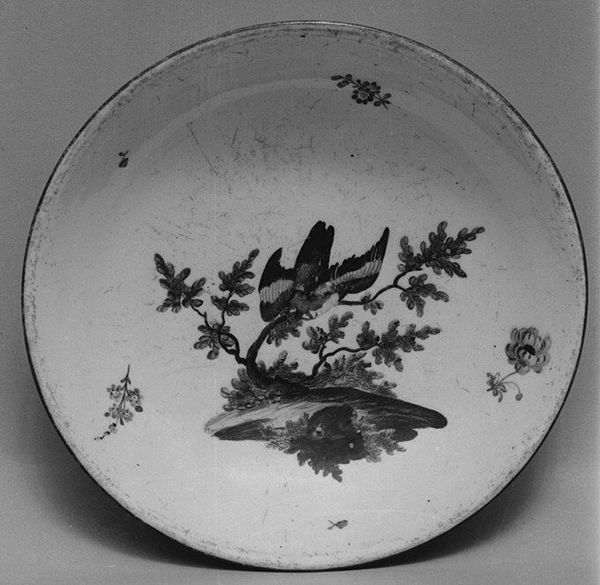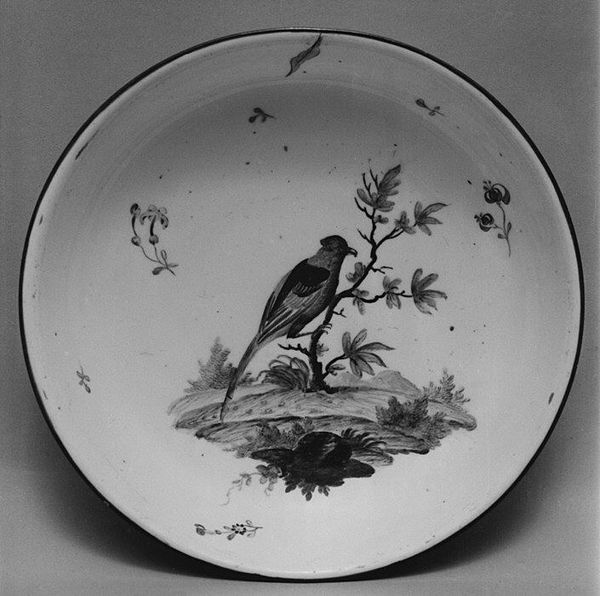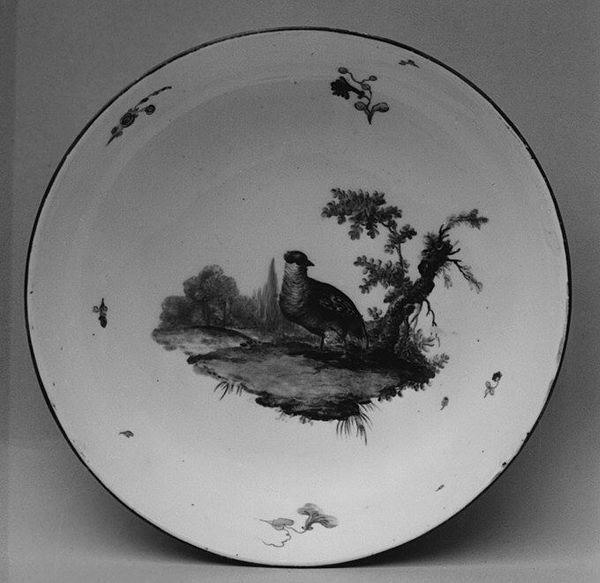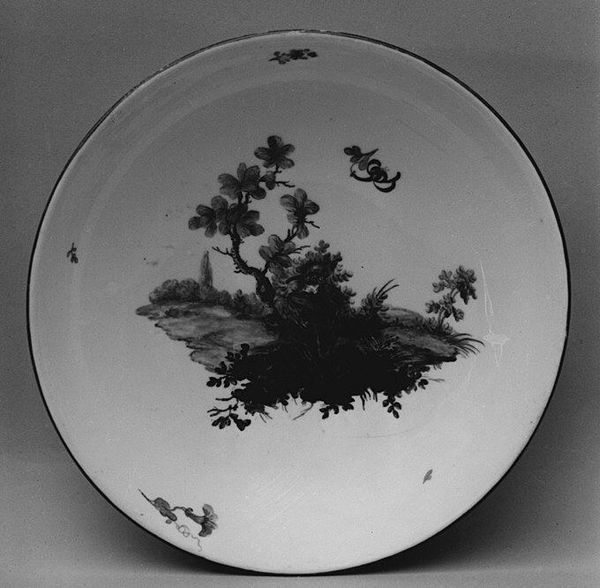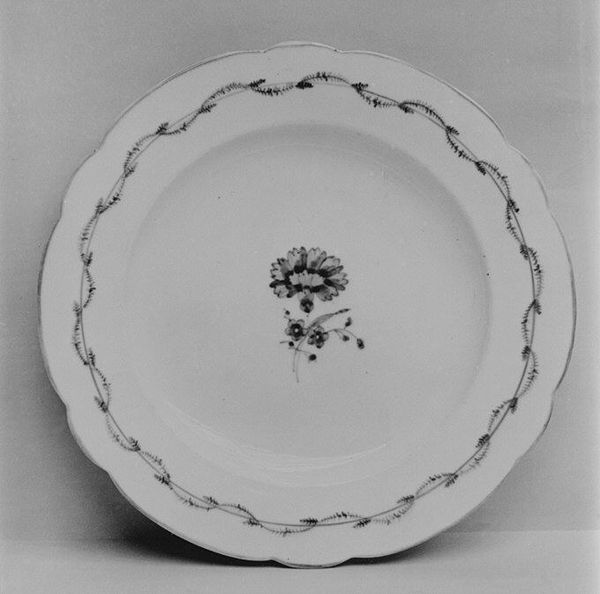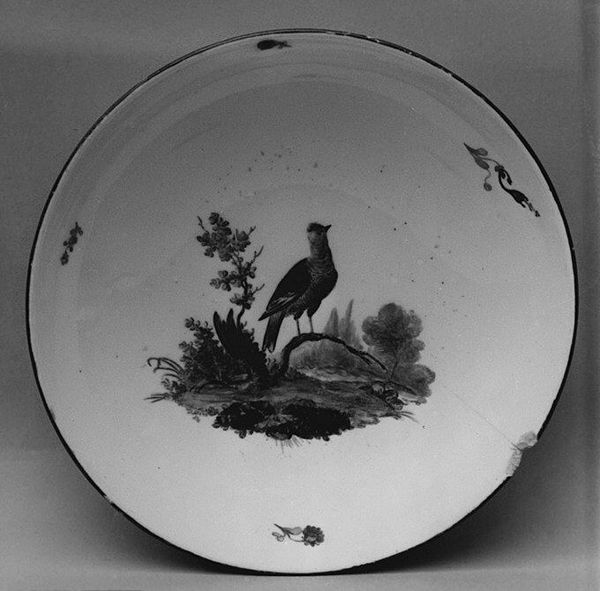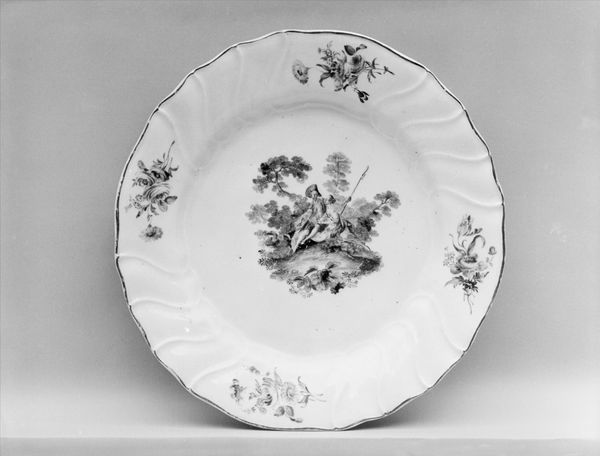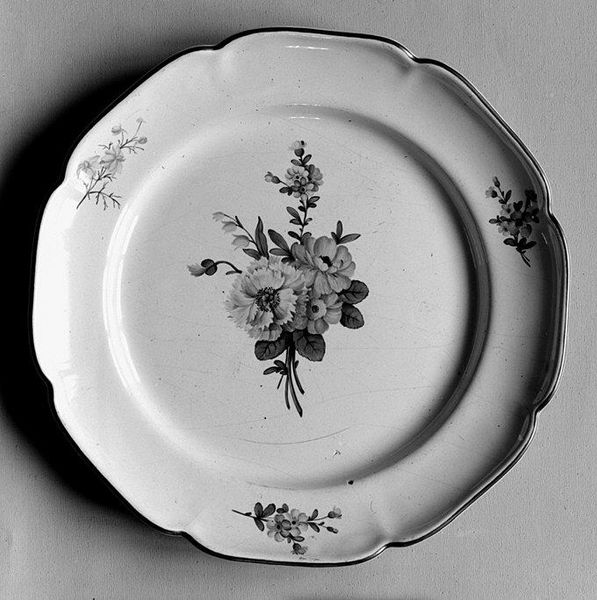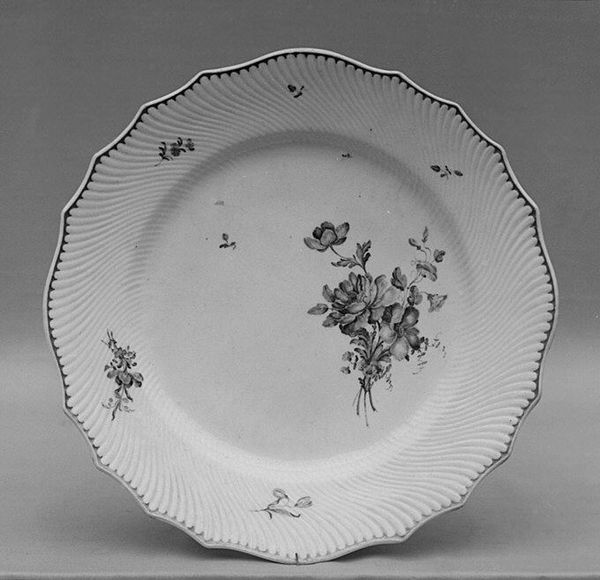
Saucer (part of a service) 1765 - 1775
0:00
0:00
drawing, print, ceramic, porcelain, sculpture
#
drawing
# print
#
landscape
#
ceramic
#
bird
#
flower
#
porcelain
#
sculpture
#
decorative-art
#
rococo
Dimensions: Diameter: 5 1/4 in. (13.3 cm)
Copyright: Public Domain
Editor: This is a porcelain saucer, made by the Frankenthal Porcelain Manufactory between 1765 and 1775. It's currently held at the Metropolitan Museum of Art. It's so delicate, almost like a little watercolor. What story do you think its decorations are telling? Curator: Well, first, consider the materials. Porcelain itself signifies luxury, a highly prized commodity traded extensively in the 18th century. The painted decoration, featuring a bird and floral motifs, reinforces this connection to nature and trade. Editor: Trade, really? I was seeing something purely decorative. Curator: Decorative yes, but within a context. Who would have commissioned and used this saucer? Think of the labor involved: from sourcing the materials, shaping the clay, firing it in a kiln, to the artist’s painting. All for something meant for display and elite consumption, most likely connected to global trade routes bringing tea, coffee, and sugar. What does it tell you about production in that period? Editor: It paints a picture of privilege and access, doesn't it? The object signifies social stratification via decorative choices that indicate both access and the exploitation of labor. So even something that appears dainty like a saucer, holds a world of context? Curator: Exactly. It prompts us to question how aesthetics were, and continue to be, entangled with social and economic systems. A seemingly simple saucer embodies complex systems of power and making. Editor: I see this rococo piece completely differently now; seeing it as decorative AND deeply tied to industry. Thank you!
Comments
No comments
Be the first to comment and join the conversation on the ultimate creative platform.

